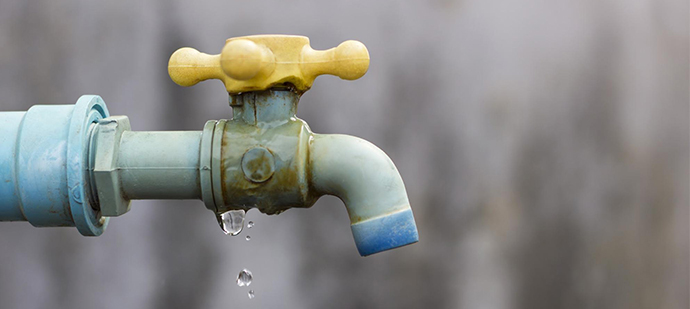6 Ways to Find Surprise Water Leakages in Your House
6 Ways to Find Surprise Water Leakages in Your House
Blog Article
Do you find yourself hunting for critical info about Locating water leaks?

Early detection of dripping water lines can mitigate a potential catastrophe. Some tiny water leaks might not be visible.
1. Analyze the Water Meter
Every residence has a water meter. Checking it is a proven way that aids you discover leaks. For beginners, switch off all the water sources. Make certain no person will certainly purge, use the faucet, shower, run the cleaning equipment or dishwasher. From there, go to the meter and watch if it will change. Given that no one is using it, there should be no movements. If it relocates, that shows a fast-moving leakage. If you identify no adjustments, wait an hour or two and examine back once again. This means you might have a slow leakage that might even be underground.
2. Inspect Water Consumption
If you identify abrupt changes, despite your intake being the same, it indicates that you have leakages in your plumbing system. An abrupt spike in your expense shows a fast-moving leakage.
At the same time, a stable increase on a monthly basis, despite having the same behaviors, reveals you have a slow leakage that's also slowly rising. Call a plumber to completely examine your residential or commercial property, specifically if you really feel a warm area on your flooring with piping beneath.
3. Do a Food Coloring Examination
When it comes to water consumption, 30% comes from commodes. If the color in some way infiltrates your dish throughout that time without flushing, there's a leak in between the storage tank and also dish.
4. Asses Exterior Lines
Do not neglect to examine your outside water lines as well. Should water seep out of the connection, you have a loosened rubber gasket. One tiny leakage can waste tons of water and also spike your water bill.
5. Analyze the situation as well as examine
Home owners must make it a behavior to check under the sink counters as well as even inside closets for any type of bad odor or mold growth. These two red flags show a leak so timely interest is required. Doing regular evaluations, also bi-annually, can save you from a major issue.
Much more significantly, if you understand your house is already old, maintain a watchful eye on your heaters, hose pipes, pipes and so on. Look for stainings as well as weakening as most pipes and home appliances have a life span. They will also normally degrade as a result of deterioration. Do not wait for it to intensify if you believe dripping water lines in your plumbing system. Call an expert plumber today so you do not wind up with a dreadful mess in your house.
Early discovery of dripping water lines can minimize a potential catastrophe. Some little water leakages might not be visible. Inspecting it is a surefire way that helps you discover leakages. One small leakage can squander lots of water and increase your water bill.
If you presume dripping water lines in your plumbing system, don't wait for it to rise.
WARNING SIGNS OF WATER LEAKAGE BEHIND THE WALL
PERSISTENT MUSTY ODORS
As water slowly drips from a leaky pipe inside the wall, flooring and sheetrock stay damp and develop an odor similar to wet cardboard. It generates a musty smell that can help you find hidden leaks.
MOLD IN UNUSUAL AREAS
Mold usually grows in wet areas like kitchens, baths and laundry rooms. If you spot the stuff on walls or baseboards in other rooms of the house, it’s a good indicator of undetected water leaks.
STAINS THAT GROW
When mold thrives around a leaky pipe, it sometimes takes hold on the inside surface of the affected wall. A growing stain on otherwise clean sheetrock is often your sign of a hidden plumbing problem.
PEELING OR BUBBLING WALLPAPER / PAINT
This clue is easy to miss in rooms that don’t get much use. When you see wallpaper separating along seams or paint bubbling or flaking off the wall, blame sheetrock that stays wet because of an undetected leak.
BUCKLED CEILINGS AND STAINED FLOORS
If ceilings or floors in bathrooms, kitchens or laundry areas develop structural problems, don’t rule out constant damp inside the walls. Wet sheetrock can affect adjacent framing, flooring and ceilings.
https://www.servicemasterbyzaba.com/blog/how-to-detect-water-leakage-in-walls/

I was brought to that write-up about Finding hidden leaks through a friend on a different web page. Enjoyed our entry? Please share it. Help somebody else locate it. I praise you for your time. Kindly come by our site back soon.
Report this page